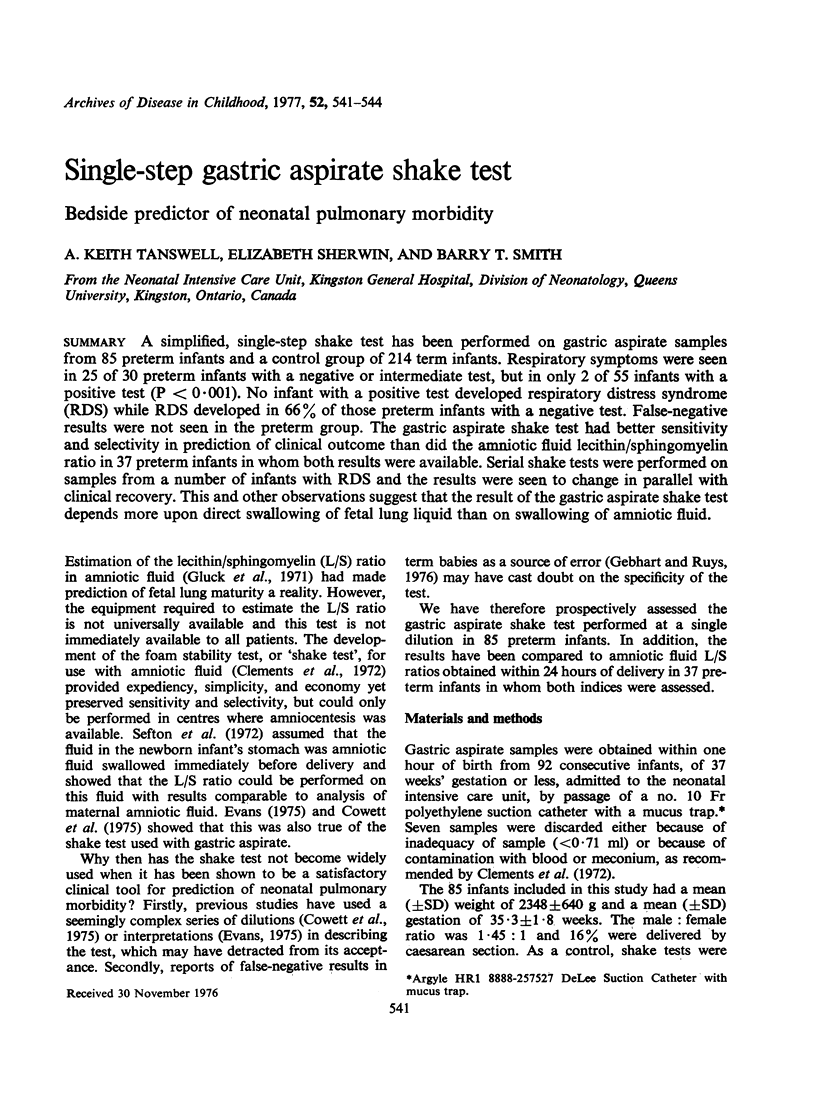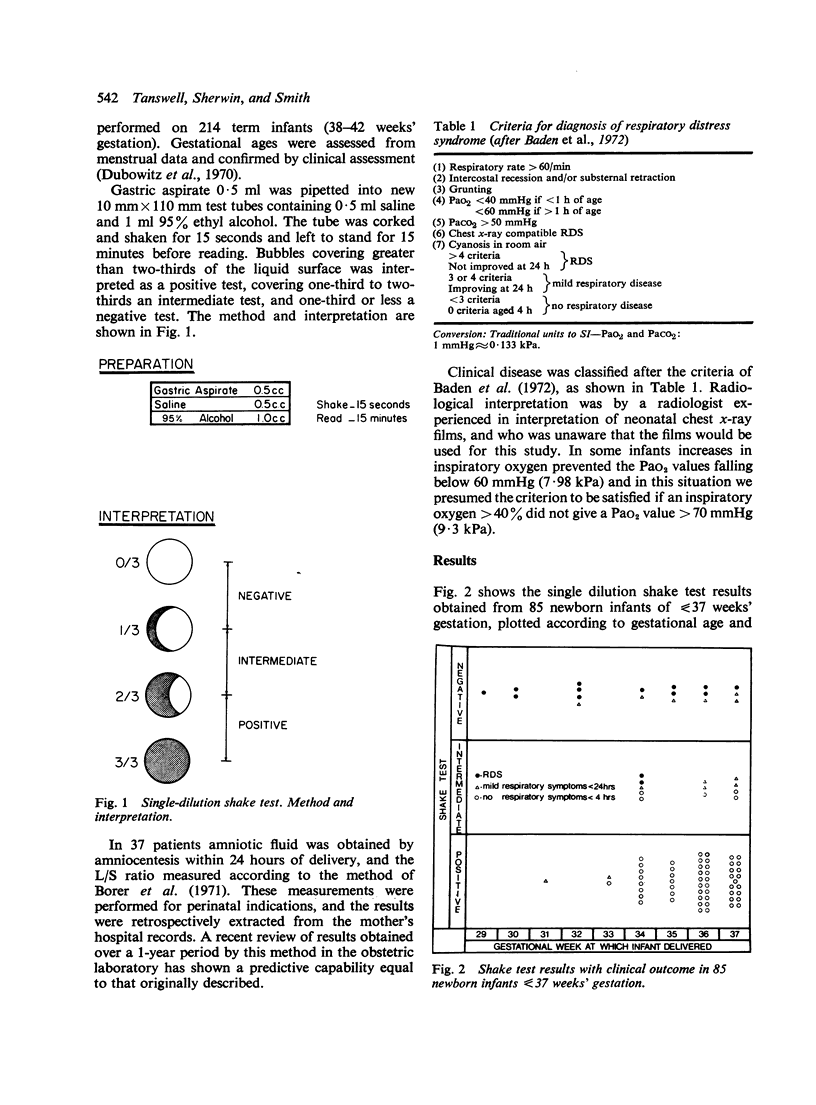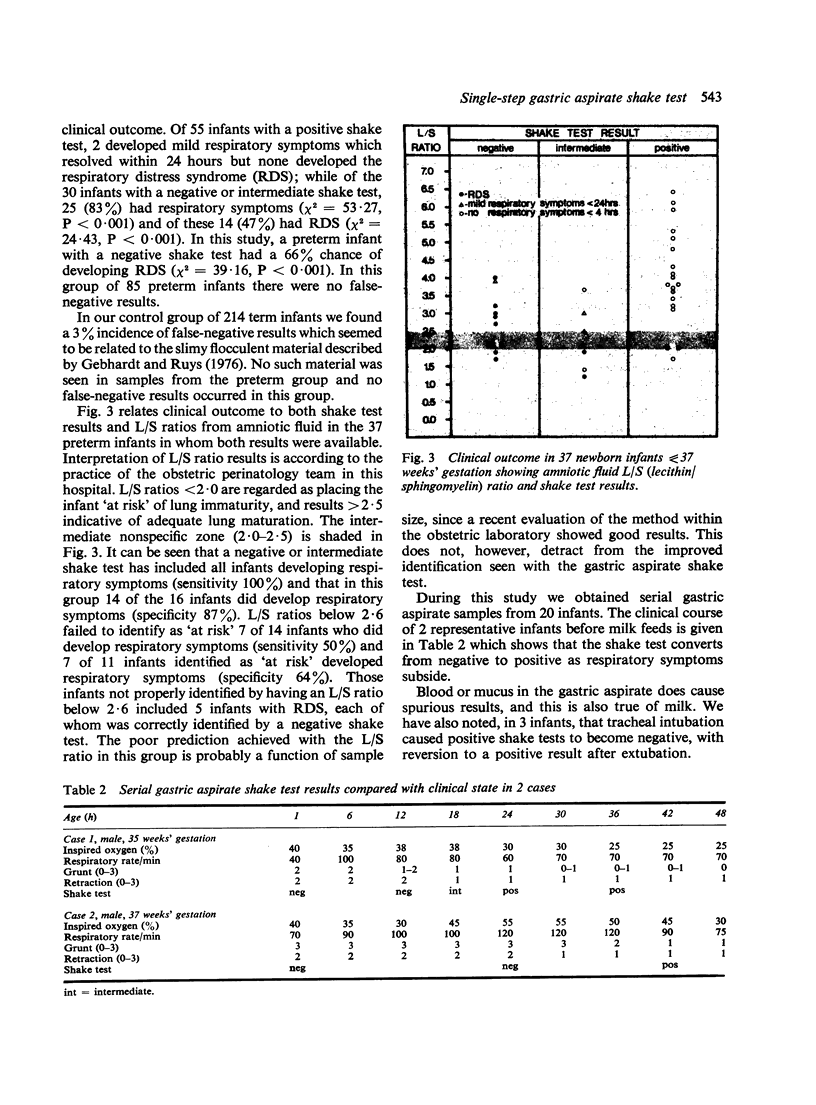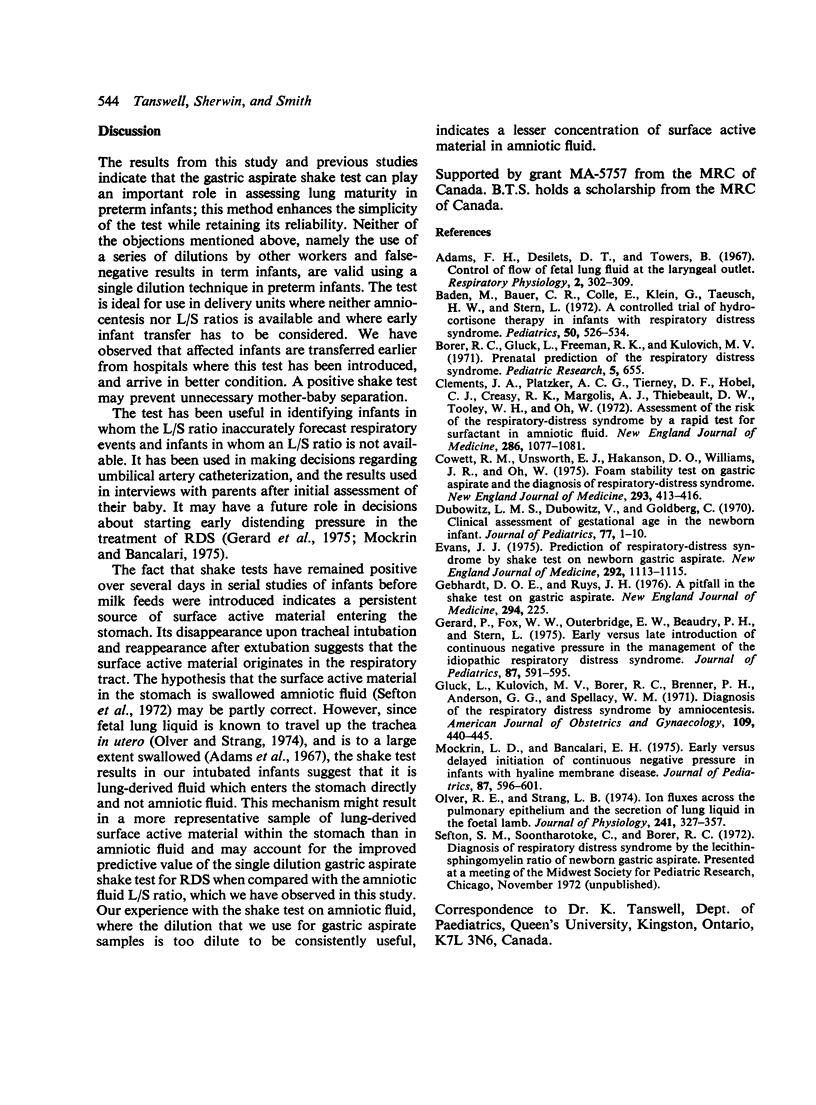Abstract
A simplified, single-step shake test has been performed on gastric aspirate samples from 85 preterm infants and a control group of 214 term infants. Respiratory symptoms were seen in 25 of 30 preterm infants with a negative or intermediate test, but in only 2 of 55 infants with a positive test (P less than 0-001). No infant with a positive test developed respiratory distress syndrome (RDS) while RDS developed in 66% of those preterm infants with a negative test. False-negative results were not seen in the preterm group. The gastric aspirate shake test had better sensitivity and selectivity in prediction of clinical outcome than did the amniotic fluid lecithin/sphingomyelin ratio in 37 preterm infants in whom both results were available. Serial shake tests were performed on samples from a number of infants with RDS and the results were seen to change in parallel with clinical recovery. This and other observations suggest that the result of the gastric aspirate shake test depends more upon direct swallowing of fetal lung liquid than on swallowing of amniotic fluid.
Full text
PDF



Selected References
These references are in PubMed. This may not be the complete list of references from this article.
- Adams F. H., Desilets D. T., Towers B. Control of flow of fetal lung fluid at the laryngeal outlet. Respir Physiol. 1967 May;2(3):302–309. doi: 10.1016/0034-5687(67)90035-7. [DOI] [PubMed] [Google Scholar]
- Baden M., Bauer C. R., Colle E., Klein G., Taeusch H. W., Jr, Stern L. A controlled trial of hydrocortisone therapy in infants with respiratory distress syndrome. Pediatrics. 1972 Oct;50(4):526–534. [PubMed] [Google Scholar]
- Clements J. A., Platzker A. C., Tierney D. F., Hobel C. J., Creasy R. K., Margolis A. J., Thibeault D. W., Tooley W. H., Oh W. Assessment of the risk of the respiratory-distress syndrome by a rapid test for surfactant in amniotic fluid. N Engl J Med. 1972 May 18;286(20):1077–1081. doi: 10.1056/NEJM197205182862004. [DOI] [PubMed] [Google Scholar]
- Cowett R. M., Unsworth E. J., Hakanson D. O., Williams J. R., Oh W. Foam-stability test on gastric aspirate and the diagnosis of respiratory-distress syndrome. N Engl J Med. 1975 Aug 28;293(9):413–416. doi: 10.1056/NEJM197508282930901. [DOI] [PubMed] [Google Scholar]
- Dubowitz L. M., Dubowitz V., Goldberg C. Clinical assessment of gestational age in the newborn infant. J Pediatr. 1970 Jul;77(1):1–10. doi: 10.1016/s0022-3476(70)80038-5. [DOI] [PubMed] [Google Scholar]
- Evans J. J. Prediction of respiratory-distress syndrome by shake test on newborn gastric aspirate. N Engl J Med. 1975 May 22;292(21):1113–1115. doi: 10.1056/NEJM197505222922108. [DOI] [PubMed] [Google Scholar]
- Gebhardt D. O., Ruys J. H. Letter: A pitfall in the shake test on gastric aspirate. N Engl J Med. 1976 Jan 22;294(4):225–225. doi: 10.1056/nejm197601222940415. [DOI] [PubMed] [Google Scholar]
- Gerard P., Fox W. W., Outerbridge E. W., Beaudry P. H. Early versus late introduction of continuous negative pressure in the management of the idiopathic respiratory distress syndrome. J Pediatr. 1975 Oct;87(4):591–595. doi: 10.1016/s0022-3476(75)80832-8. [DOI] [PubMed] [Google Scholar]
- Mockrin L. D., Bancalari E. H. Early versus delayed initiation of continuous negative pressure in infants with hyaline membrane disease. J Pediatr. 1975 Oct;87(4):596–600. doi: 10.1016/s0022-3476(75)80833-x. [DOI] [PubMed] [Google Scholar]
- Olver R. E., Strang L. B. Ion fluxes across the pulmonary epithelium and the secretion of lung liquid in the foetal lamb. J Physiol. 1974 Sep;241(2):327–357. doi: 10.1113/jphysiol.1974.sp010659. [DOI] [PMC free article] [PubMed] [Google Scholar]


